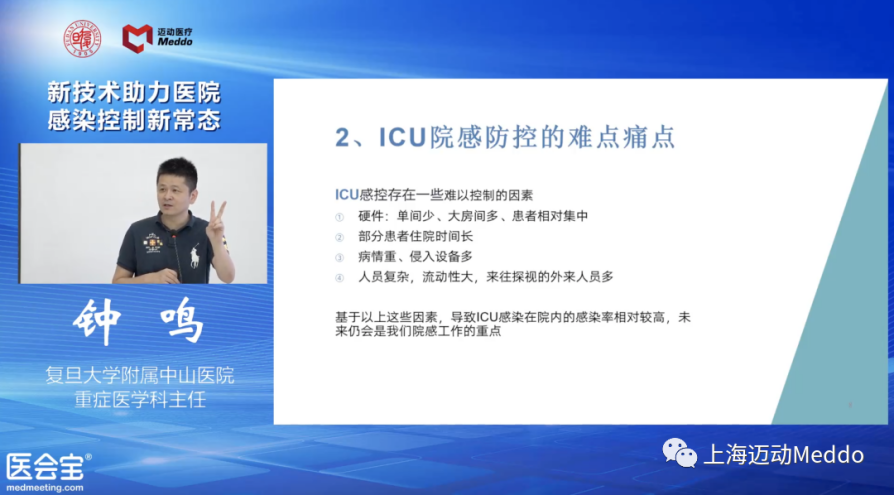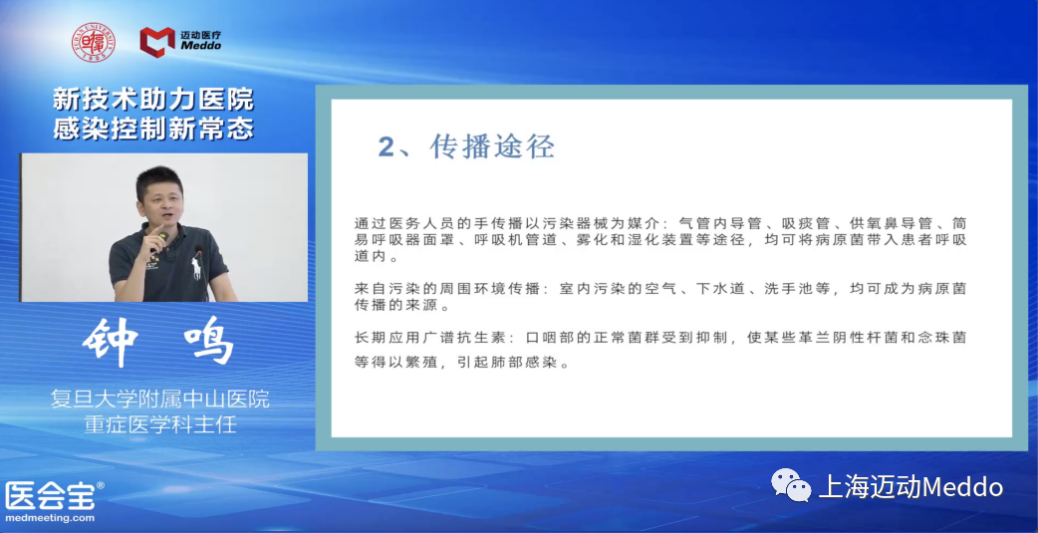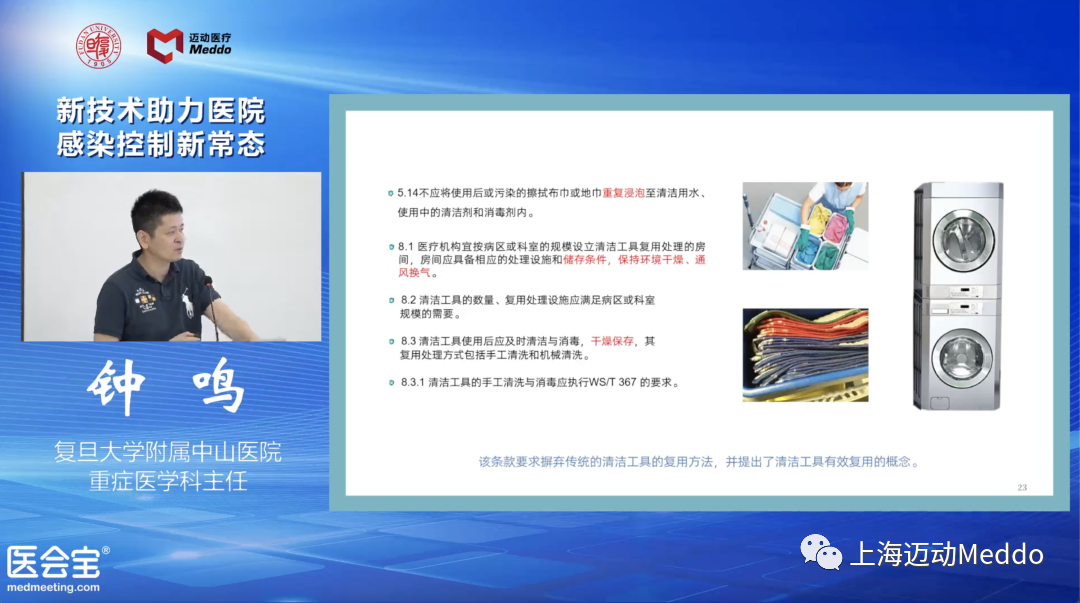Lecturer: Zhong Ming, Director of Department of Critical Care Medicine, Zhongshan Hospital, Fudan University, China
Source of content: New Technology Helps Nosocomial Infection Control: A New Normal
Topic: Nosocomial Infection Prevention and Control in ICU
It is well-known that patients living in the ICU suffer from relatively severe diseases, and, with the increasing aging of the society, ICU patients tend to have underlying medical conditions. In addition, necessary interventional operations during diagnosis and treatment may lead to barrier dysfunction of the body, thus inducing other infections, such as drug-resistant bacterial infections. Therefore, it is necessary to shore up the weak links in preventing and controlling nosocomial infection one by one, reasonably use antibiotics and compliant disinfection items, and improve the building layout. Each staff member shall take preventive measures at all levels to enhance awareness of infection control.

Mr. Zhong emphasized the impact of nosocomial infection, stating that "nosocomial infection not only prolongs the length of hospitalization for patients and increases treatment costs, but also may contribute to the increase in the mortality rate of patients, internal infections among medical staff, and occupational exposure of personnel involved." Therefore, every medical worker should establish awareness of preventing and controlling nosocomial infection as soon as possible.
Most unconscious patients who are bedridden for a long time suffer from swallowing disorders, which have a high probability of pulmonary infection. Hence, pulmonary infection has gradually become the most common infection symptom in ICUs. Among various routes of bacterial transmission, the hand is the most likely to become the carrier, thus the most direct method to prevent virus transmission is hand sterilization.

Mr. Zhang said the first step to prevent nosocomial infection is hand washing. There are plenty of pathogenic microorganisms all over the ICU, for example, on soaps, faucets, hand washing sinks, and hand towels, so rapid hand disinfection is required at all times in the ICU to avoid contaminated hands from contacting other clean areas and reduce cross infection.
1. Optimize the spatial arrangement in ICUs. Set up buffer rooms and washing basins as required, and change the isolation gown for every entry and exit; reasonably arrange bed spacing and single private rooms to ensure ventilation and lighting conditions; properly deal with wastes and strengthen isolation and disinfection; strictly follow the disinfection requirements for reusable items to ensure that the items of infectious patients are used reasonably and safely.
2. Focus on personnel management. Enhance staff's awareness of infection control in the ward and strictly implement the hand washing system; reinforce the aseptic idea; strengthen entry and exit management. Keep the ICU patients separate; isolate special patients in a separate room for classified and refined care.

3. Strengthen disinfection and isolation. Reusable items need to go through a strict disinfection process. To ensure reasonable and standard disinfection, heating disinfection (i.e., the bedpan washer machine) is preferred, and WS/T367-2012 Regulation of Disinfection Technique in Healthcare Settings shall be strictly followed, thereby achieving effective disinfection while reducing the workload of medical staff and the risk of occupational exposure.
4. Reasonably apply antimicrobial agents. According to patients' pathophysiological features, drug characteristics, clinical efficacy, and bacterial resistance, make proper use of antibiotics by strictly following the guiding principles of the clinical application of antimicrobial agents.
5. Reinforce medical waste management in ICU. Assign specific persons for management, clarify procedures for waste handover registration, refine management systems, conduct timely cleaning and disinfection, and develop emergency plans for medical waste loss, leakage, diffusion, and accidents.

Hey, I’m Frank from Meddo Medical.
With over 15 years of experience in medical devices and healthcare innovation, I specialize in providing OEM & ODM solutions for hospitals and clinics worldwide.
My goal is to share professional knowledge and industry insights to help healthcare providers choose reliable, high-performance medical equipment that improves patient outcomes.
 English
English français
français Español
Español العربية
العربية



